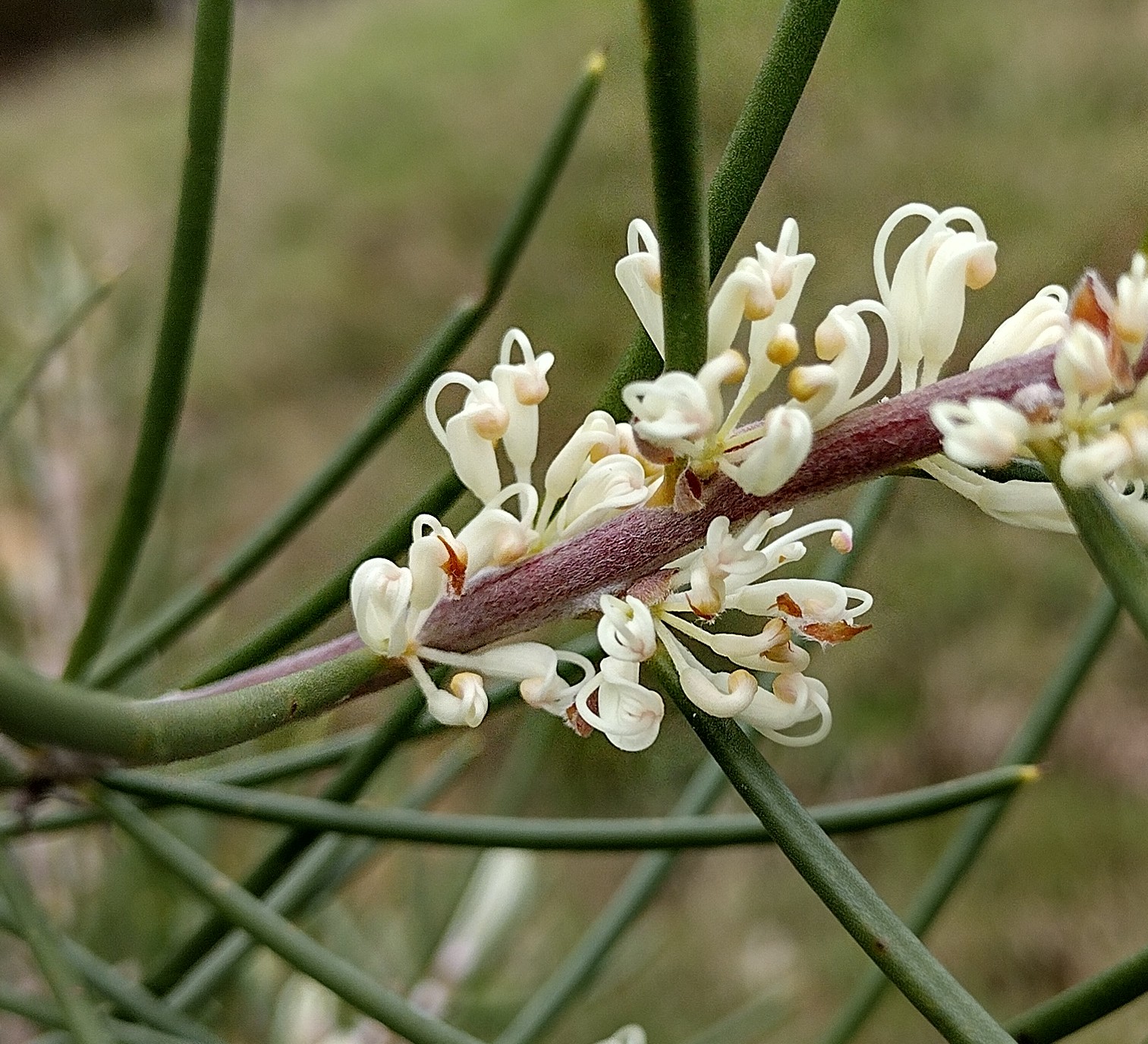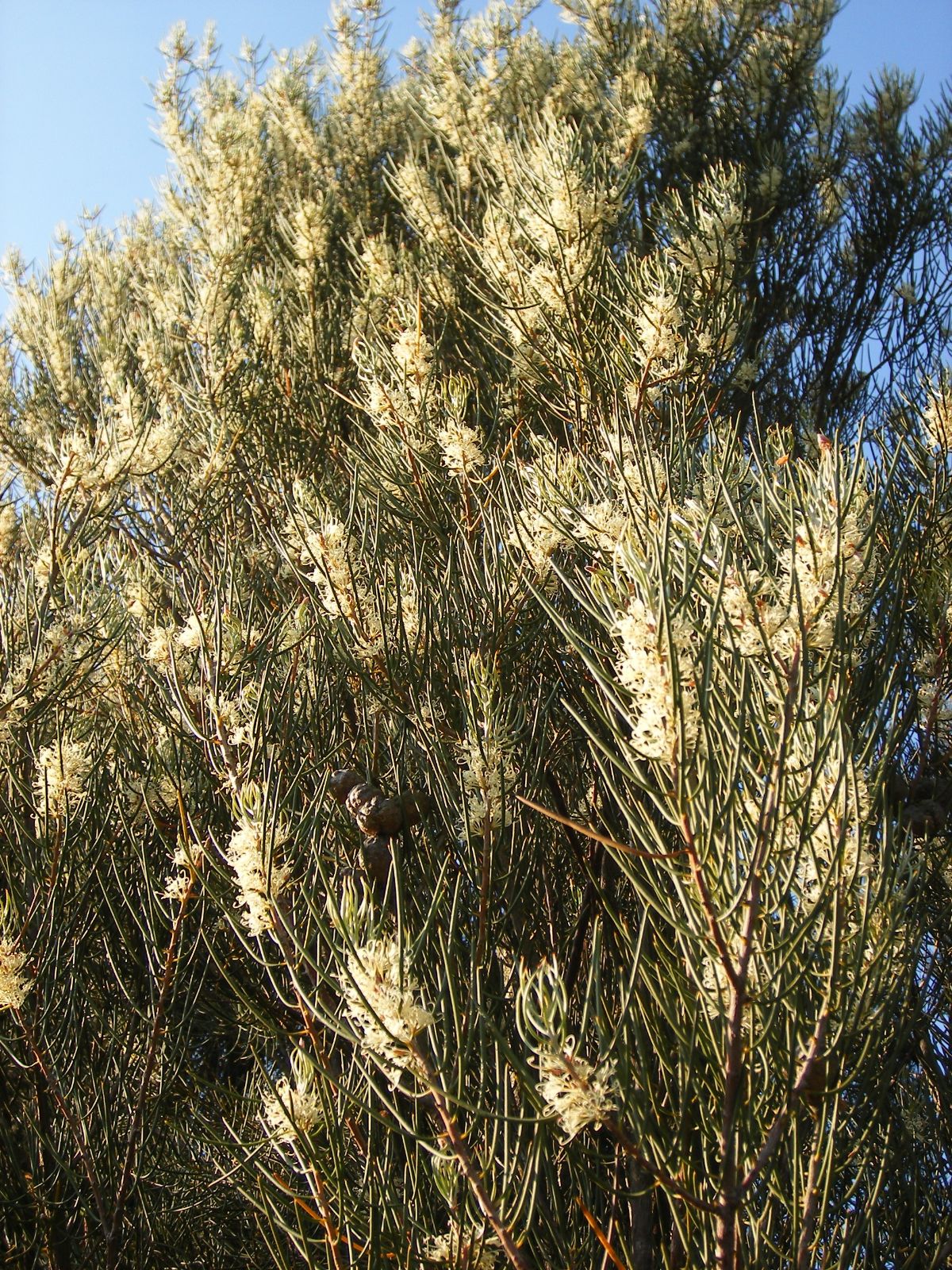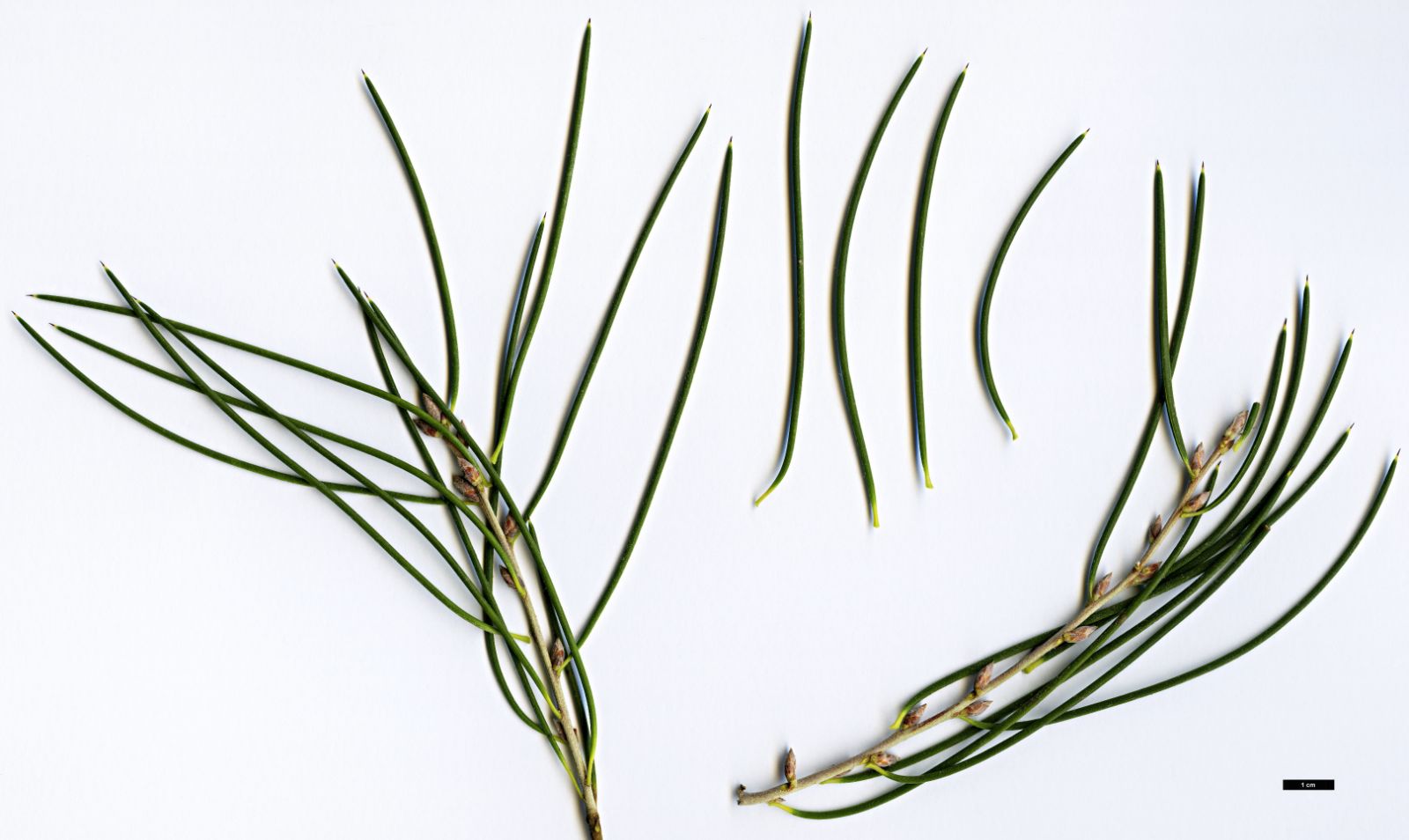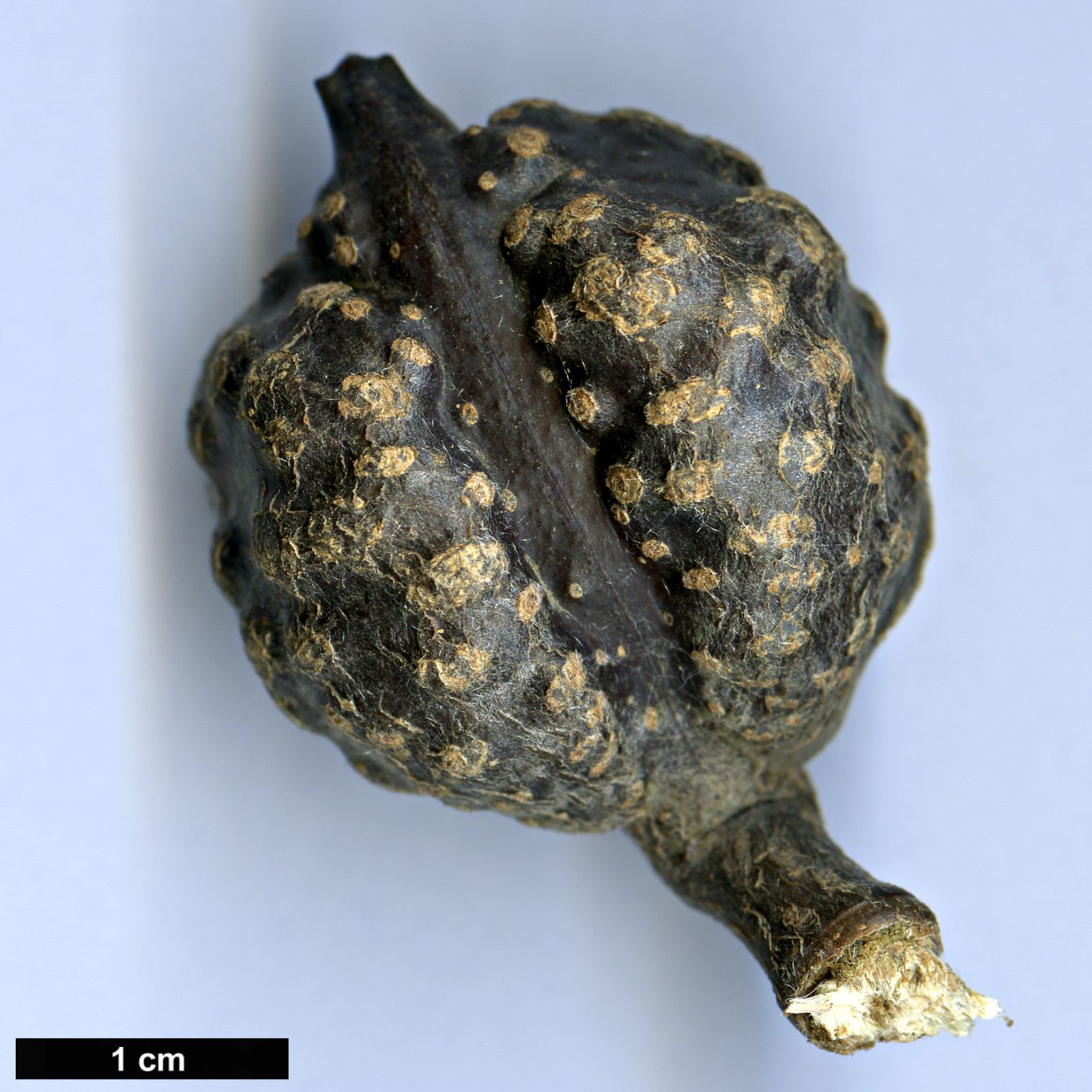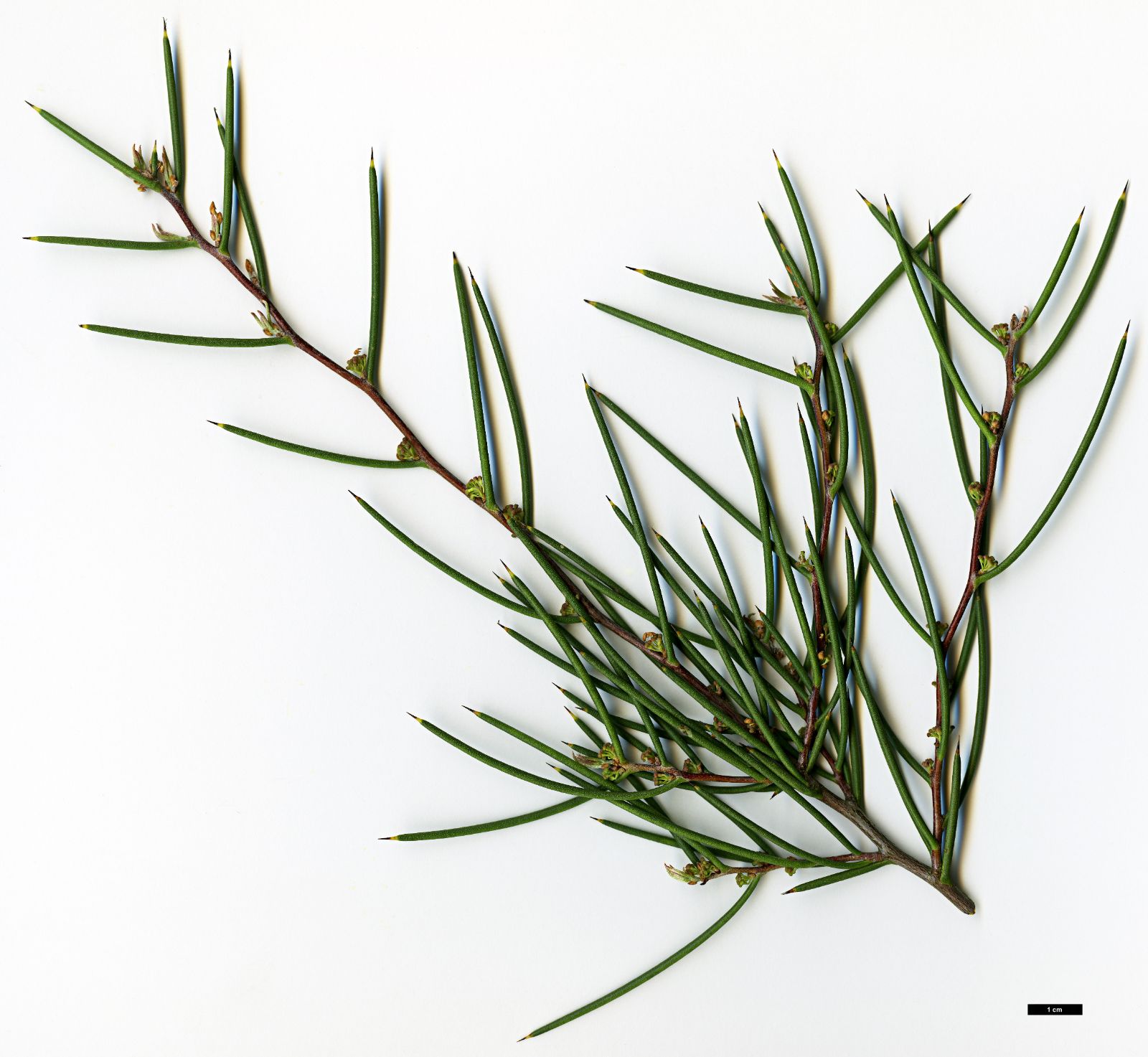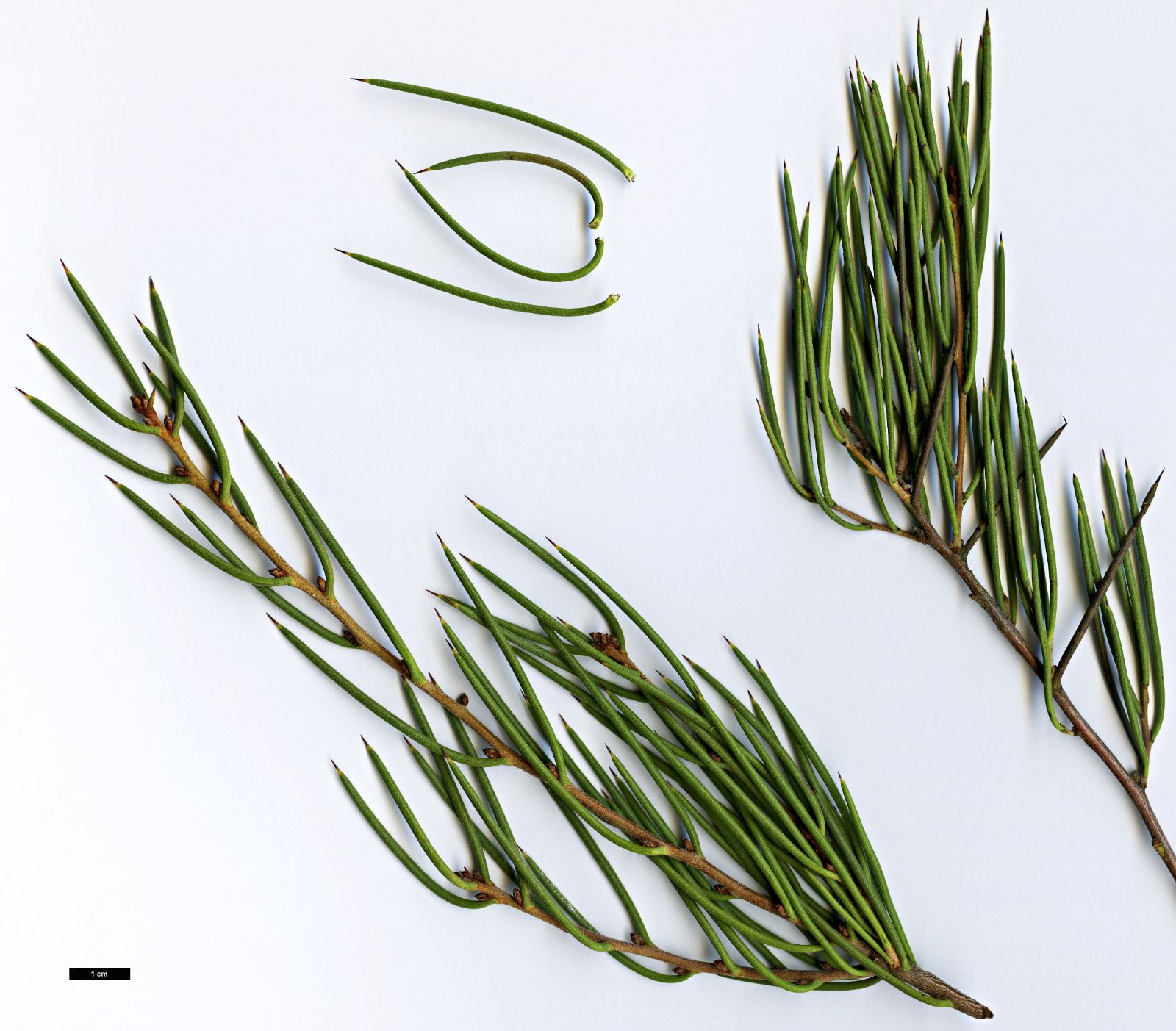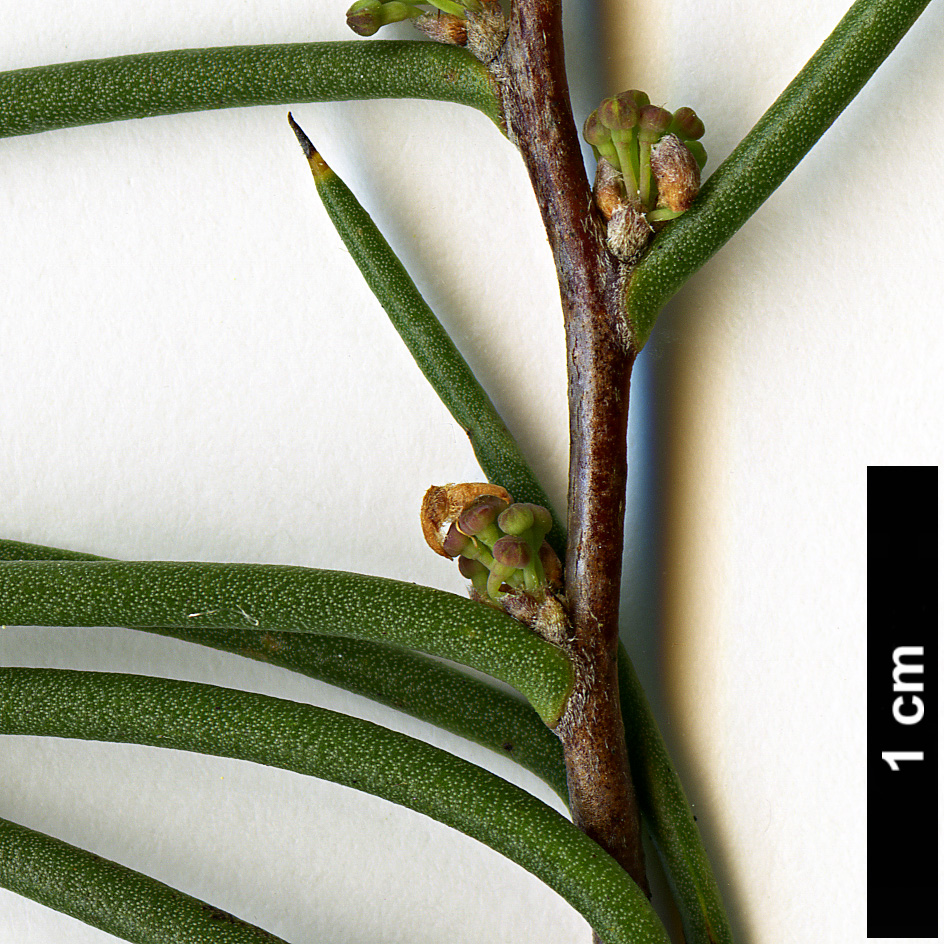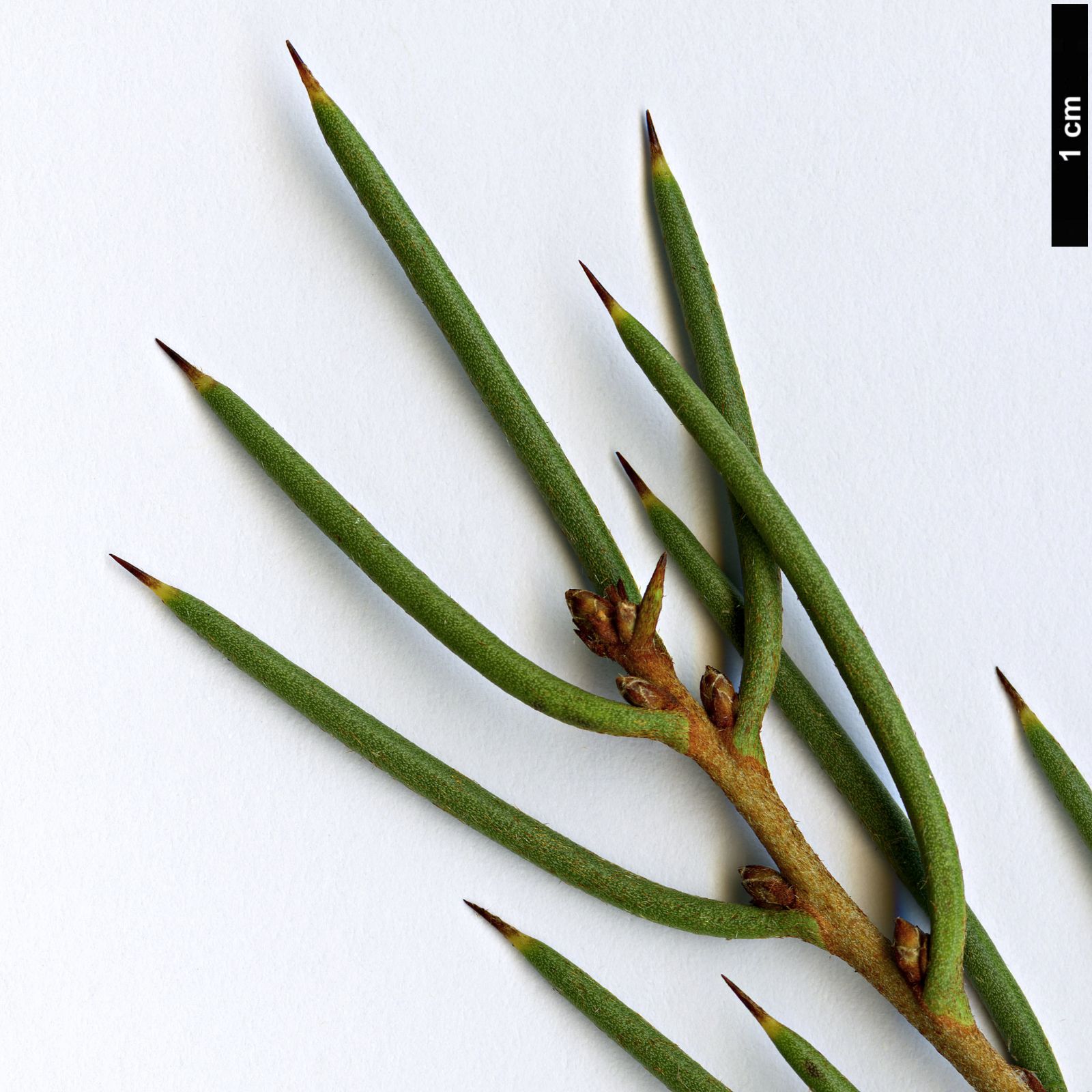Hakea lissosperma
Credits
Article from Bean's Trees and Shrubs Hardy in the British Isles
Recommended citation
'Hakea lissosperma' from the website Trees and Shrubs Online (treesandshrubsonline.
Genus
Synonyms
- H. acicularis var. lissosperma (R. Br.) Benth.
- H. sericea var. lissosperma (R. Br.) Maiden & Betche
In cultivation this species makes an erect-branched shrub 8 to 10 ft high, but in the wild may be tree-like and up to 20 ft high; branches stout. Young shoots, leaves, and flower-stalks covered at first with silky hairs, later glabrous. Leaves simple, erect, 11⁄2 to 5 in. long, circular in cross-section, very rigid, pungently pointed at the apex, narrowed at the base. Flowers white or creamy white, in axillary almost sessile clusters of six or more. Individual flower-buds tubular, bent and swollen at the apex. Perianth-segments narrowly lanceolate, free to the base when the flower is fully expanded. Fruits about 1 in. long, roundish, woody, wrinkled or warted, shortly beaked or unbeaked. Seeds smooth on both sides.
Native of Tasmania, where it ascends to an altitude of 4,000 ft, and of Victoria and New South Wales. Probably the plants now in cultivation derive from the seeds collected by H. F. Comber during his expedition to Tasmania in 1929–30. It is an interesting shrub, much resembling a conifer when seen from a distance, but the flowers make little display. It is hardy from mid-Sussex westward in a sunny sheltered position and occasionally fruits. There is a fine group at Nymans in Sussex, growing in an exposed position; they are seedlings of the plants raised originally from the seeds sent by Comber.
H. sericea Schrad. & J. Wendl. (1797) Banksia tenuifolia Salisb. (1796); Hakea tenuifolia Dum.-Cours. (nom. nov., 1805); Hakea tenuifolia (Salisb.) Britten (1916); Hakea acicularis (Sm. ex Vent.) Knight (1809); Conchium aciculare Sm. ex Vent. (1803) – Resembling the preceding but with more slender, shorter leaves (1 to 3 in. long), more spreading, not narrowed at the base, and having fruits with a pronounced beak. Bot. Mag., n.s., t. 229 (as H. tenuifolia). Native of Tasmania, Victoria, and New South Wales. It was introduced before 1796 but has probably not been in cultivation continuously since then. The material for the plate in the Botanical Magazine came from a plant growing in a cool greenhouse in the Oxford Botanic Garden. It flowers there in December and January and produces fertile seeds. In the milder parts it would probably be hardy and attain a height of 8 to 10 ft. The flowers are tinged with pink in some forms.
It should be noted that although H. acicularis is a synonym of H. sericea some of the plants grown under that name may be H. lissosperma.
H. microcarpa R. Br
A shrub 2 to 8 ft high. Leaves terete, spine-pointed, 1 to 3{1/2} in. long, erect or slightly spreading. Flowers white or cream-coloured in small axillary clusters. Fruits flattish, obliquely obovate, beaked, {3/8} to {1/2} in. long, with smooth rather thin valves. Native of E. Australia and Tasmania. Raised from seeds collected by Lord Talbot de Malahide in Tasmania, it has proved quite hardy at Jermyns House, Romsey, and fruits freely there.

